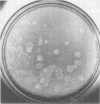Abstract
Mouse-passaged lymphocytic choriomeningitis (LCM) virus was found to contain a mixture of two different plaque-type mutants when plated on BHK-21/13S cells in agarose suspension. One mutant gave rise to clear plaques, with death of the cells, whereas the other produced turbid plaques which were sometimes very difficult to see. The clear-plaque variant caused a pronounced cytopathic effect on BHK-21 cells, but the turbid variant caused none; it also interfered with the cytopathic effect due to the clear variant. Brain-passed LCM virus was found to consist mainly of the clear-plaque-type, whereas liver-passed virus was mainly turbid-plaque-type. The clear type induced convulsions and early death after intracerebral inoculation of adult mice; the turbid variant caused no convulsions and late deaths. In newborn mice, the clear-plaque-type was uniformly fatal, whereas the turbid variant caused no deaths but instead induced persistent tolerant infection.
Full text
PDF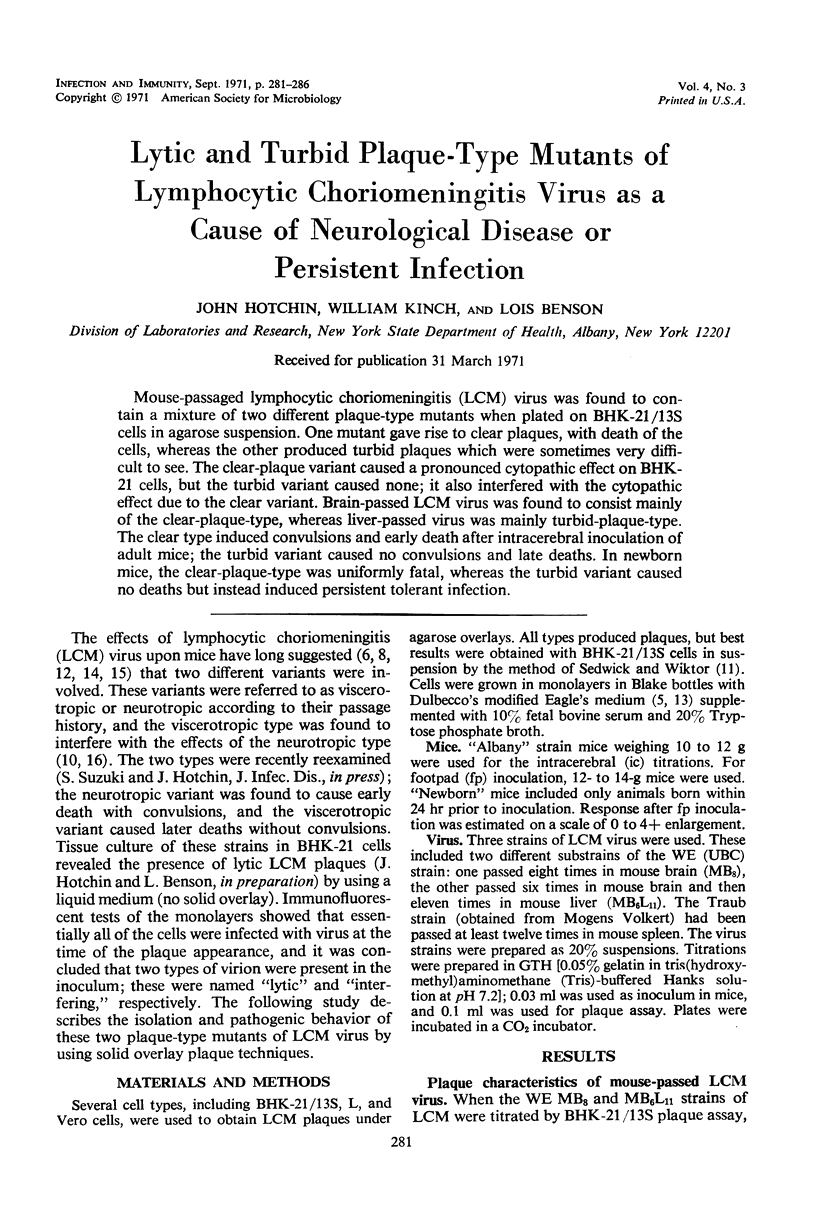
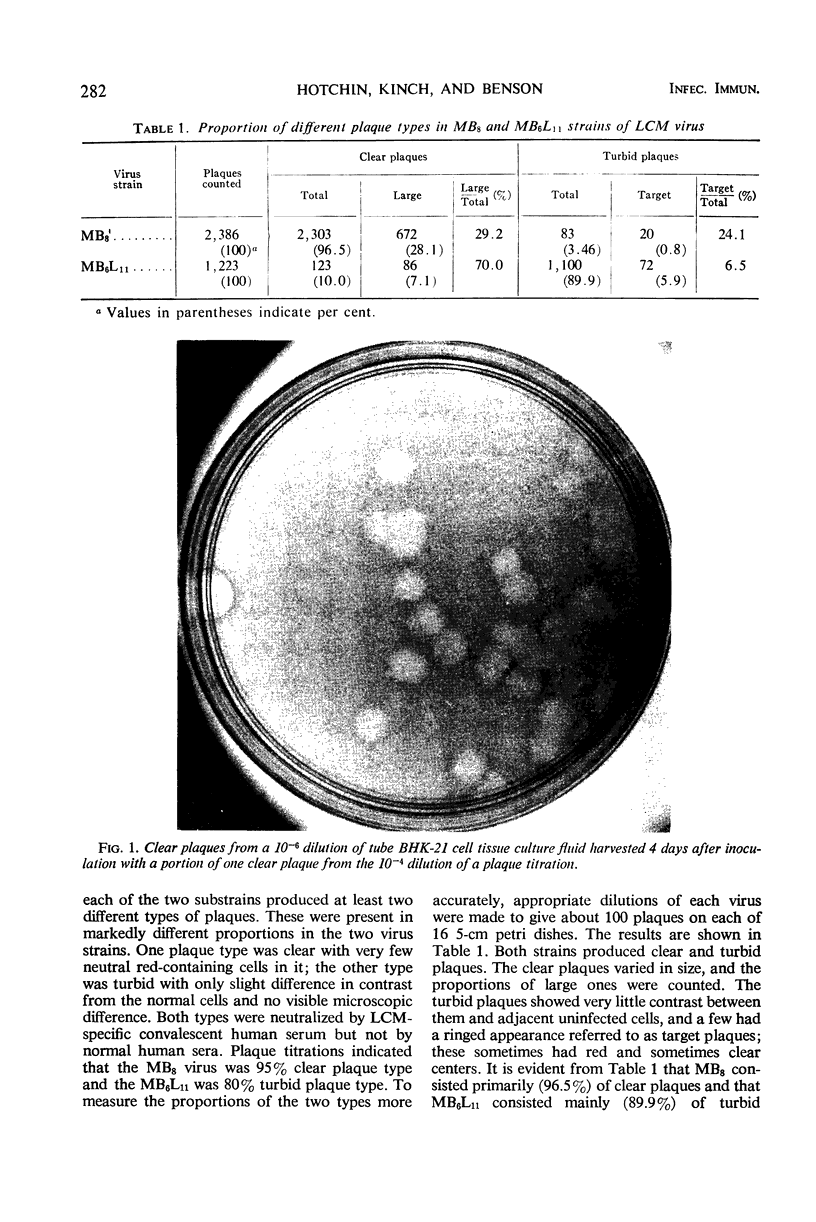
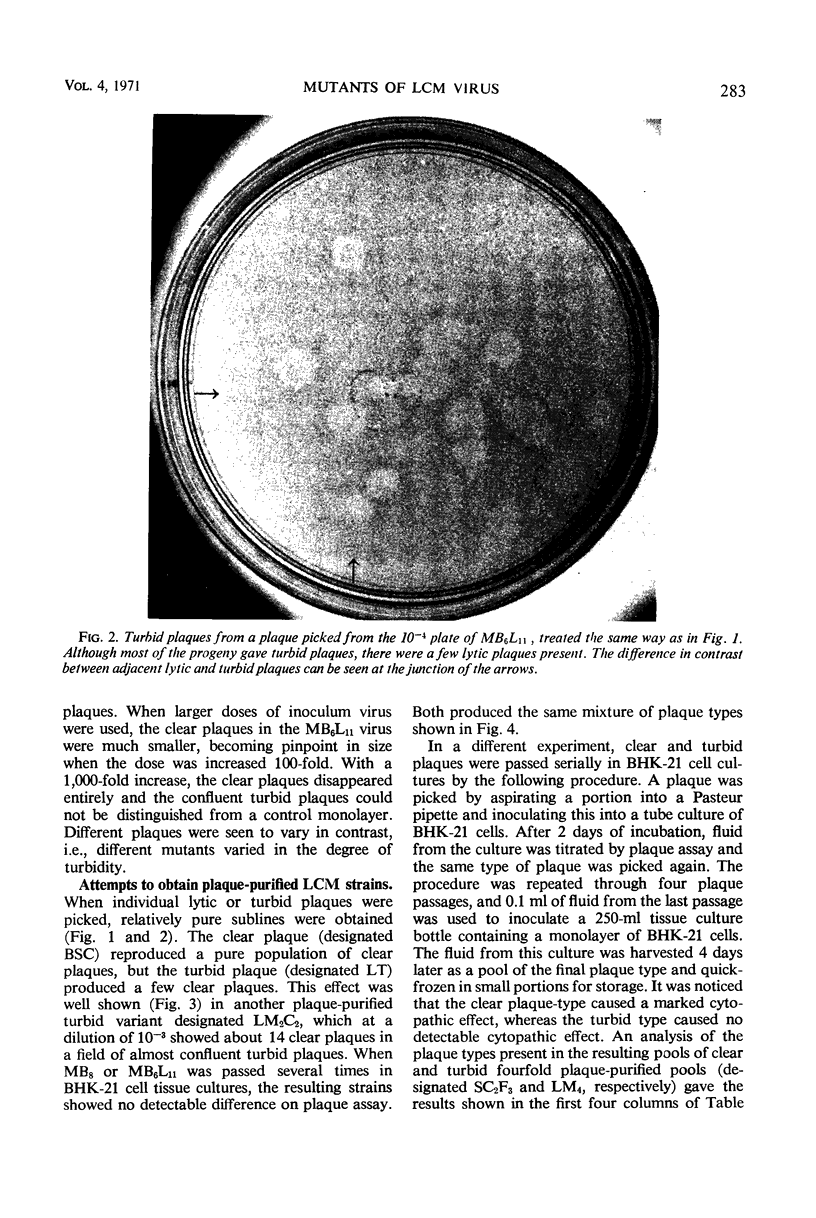

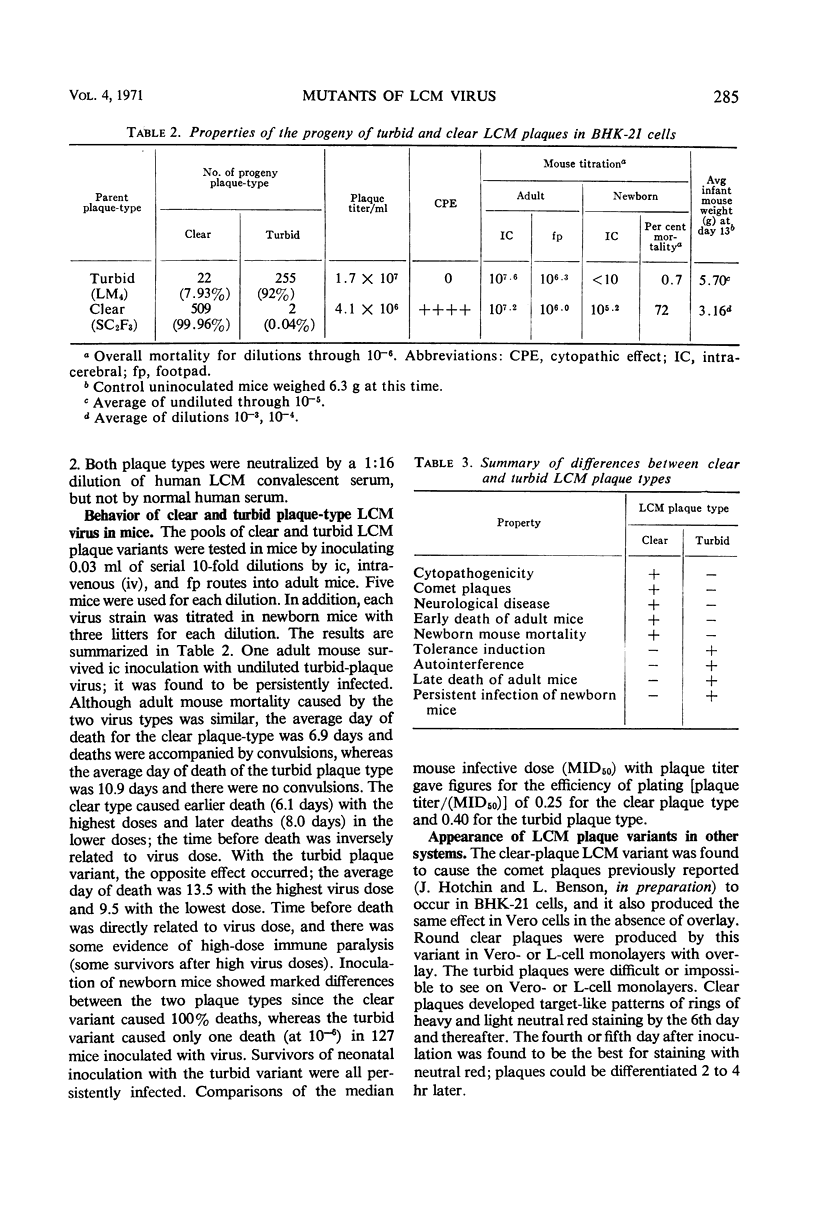
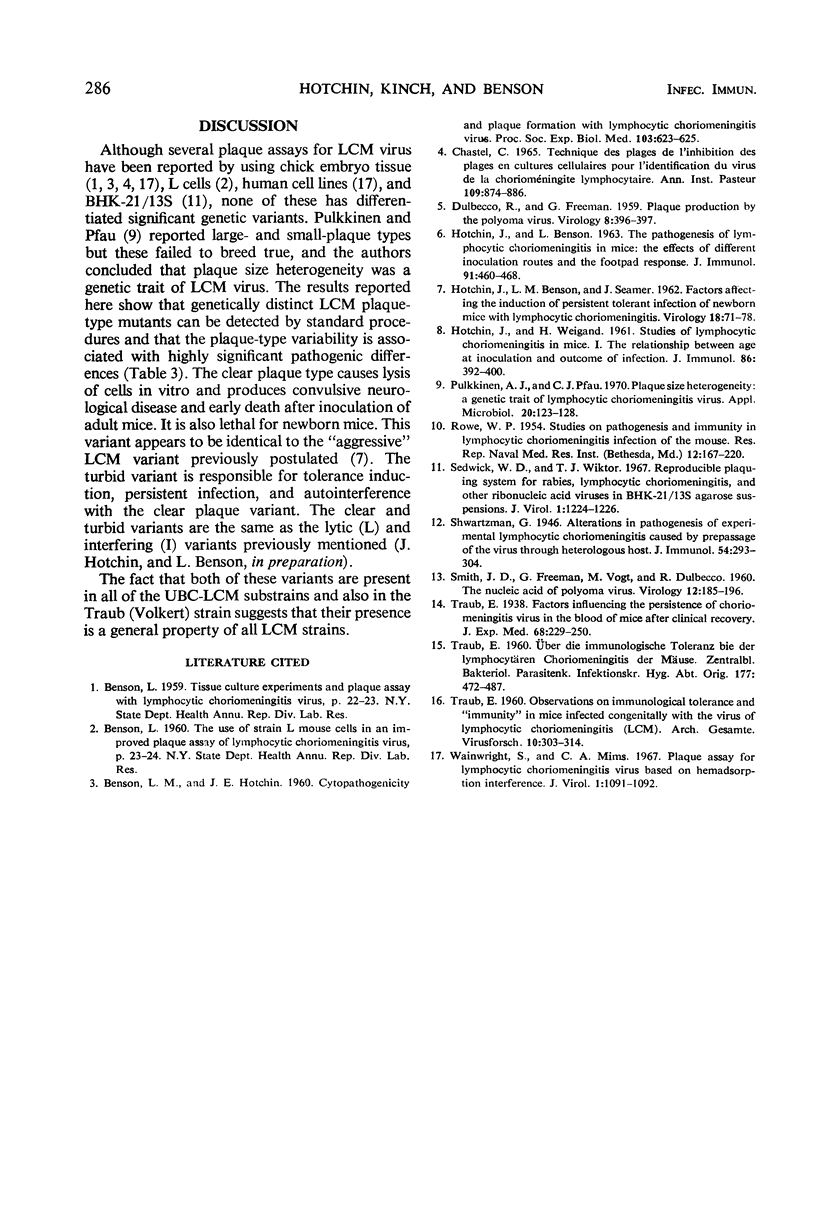
Images in this article
Selected References
These references are in PubMed. This may not be the complete list of references from this article.
- BENSON L. M., HOTCHIN J. E. Cytopathogenicity and plaque formation with lymphocytic choriomeningitis virus. Proc Soc Exp Biol Med. 1960 Mar;103:623–625. doi: 10.3181/00379727-103-25616. [DOI] [PubMed] [Google Scholar]
- Chastel C. Technique des plages et de l'inhibition des plages en cultures cellulaires pour l'identification du virus de la chorioméningite lymphocytaire. Ann Inst Pasteur (Paris) 1965 Dec;109(6):874–886. [PubMed] [Google Scholar]
- DULBECCO R., FREEMAN G. Plaque production by the polyoma virus. Virology. 1959 Jul;8(3):396–397. doi: 10.1016/0042-6822(59)90043-1. [DOI] [PubMed] [Google Scholar]
- HOTCHIN J., BENSON L. THE PATHOGENESIS OF LYMPHOCYTIC CHORIOMENINGITIS IN MICE: THE EFFECTS OF DIFFERENT INOCULATION ROUTES AND THE FOOTPAD RESPONSE. J Immunol. 1963 Oct;91:460–468. [PubMed] [Google Scholar]
- HOTCHIN J., WEIGAND H. Studies of lymphocytic choriomeningitis in mice. I. The relationship between age at inoculation and outcome of infection. J Immunol. 1961 Apr;86:392–400. [PubMed] [Google Scholar]
- Pulkkinen A. J., Pfau C. J. Plaque size heterogeneity: a genetic trait of lymphocytic choriomeningitis virus. Appl Microbiol. 1970 Jul;20(1):123–128. doi: 10.1128/am.20.1.123-128.1970. [DOI] [PMC free article] [PubMed] [Google Scholar]
- Sedwick W. D., Wiktor T. J. Reproducible plaquing system for rabies, lymphocytic choriomeningitis,k and other ribonucleic acid viruses in BHK-21-13S agarose suspensions. J Virol. 1967 Dec;1(6):1224–1226. doi: 10.1128/jvi.1.6.1224-1226.1967. [DOI] [PMC free article] [PubMed] [Google Scholar]
- TRAUB E. Observations on immunological tolerance and "immunity" in mice infected congenitally with the virus of lymphocytic choriomeningitis (LCM). Arch Gesamte Virusforsch. 1960;10:303–304. doi: 10.1007/BF01250677. [DOI] [PubMed] [Google Scholar]
- TRAUB E. [On immunological tolerance in lymphocytic choriomeningitis in mice]. Zentralbl Bakteriol. 1960 Feb;177:472–487. [PubMed] [Google Scholar]
- Wainwright S., Mims C. A. Plaque assay for lymphocytic choriomeningitis virus based on hemadsorption interference. J Virol. 1967 Oct;1(5):1091–1092. doi: 10.1128/jvi.1.5.1091-1092.1967. [DOI] [PMC free article] [PubMed] [Google Scholar]






